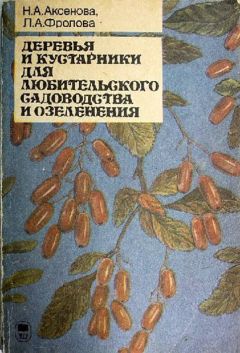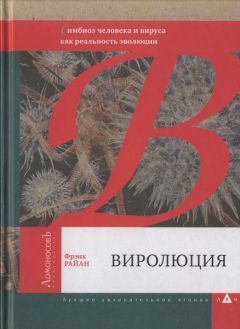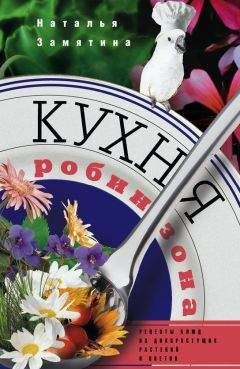Фрэнк Райан - Виролюция. Важнейшая книга об эволюции после «Эгоистичного гена» Ричарда Докинза
117
Ohno S. Evolution by Gene Duplication. New York: Springer Verlag, 1970.
118
Patterson N., Richter D. J., Gnerre S., et al. Genetic evidence for complex speciation of humans and chimpanzees. Nature 2006;441:1103–8.
119
Our human history. New York Times 22 May 2006, Editorial.
120
Detwiller K. M., Burrell A.S., Jolly C.J. Conservation implications of hybridization in African primates. American Society of Primatologists Conference 2003, abstract #127.
121
Whitfield J. Lovers, not fighters? New genetic signs that modern humans mated with Homo erectus. Scientific American March 2008; 21.
122
Saey T. Н. First rough draft of Neanderthal genome released. Science News Web Edition 12 February 2009.
123
Ferrier D.E.K., Minguillón C. Evolution of the Hox / ParaHox gene clusters. International Journal of Developmental Biology 2003; 47: 605–611.
124
Gibson T. J., Spring J. Evolution of sequences, structures and genomes. Biochemical Society Transactions 2000; 28 (2): 259–264.
125
Brooke N. M., Garcia-Fernandez J., Holland P. W. H. The ParaHox gene cluster is an evolutionary sister of the Hox gene cluster. Nature 1998; 392: 920–922. See also, Pebusque M.J., Coulier F., Birnhaum D., Pontarotti P. Ancient large-scale genome duplications: phylogenetic and linkage analyses shed light on chordate genome evolution. Molecular Biology and Evolution 1998; 15: 1145–59.
126
McLysaght A., Hokamp K., Wolfe К. H. Extensive genomic duplication during early chordate evolution. Nature Genetics 2002; 2: 128–129.
127
Более подробное описание этих исследований и дальнейшие ссылки можно найти в работе: Ryan F.P. An alternative approach to medical genetics based on modern evolutionary biology. Part 5: epigenetics and genomic duplications. Journal of the Royal Society of Medicine 2009: (in press).
128
Check E. Mix and match: the hunt for what makes us human. Nature «News» 2006; 443: 8.
129
Holmes В. Magic Numbers. New Scientist 8 April 2006: 38–41.
130
Bernaud R., Boyer A., Nègre., et al. Prenatal detection of the 17p11.2 duplication in Charcot-Marie-Tooth disease type 1A: necessity of a multidisciplinary approach for heterogeneous disorders. European Journal of Human Genetics 2002; 10: 297–302.
131
Lucito R., Healy J., Alexander J., et al. Large scale copy number polymorphisms in the human genome. Science 305: 525–528.
132
Redon R., Ishikawa S., Fitch K. R. Global variation in copy number in the human genome. Nature 2006; 444: 444–456.
133
Baird P. А.Reducing birth defects in populations. Centre for Health Services and Policy Research, The University of British Columbia, January 1999. HPRU 99: 4D. http://www.chspr.ubc.ca/files/pubhcations/1999/hpru99-04D.pdf.
134
Yamamoto А., Lucas J.J., Hen R. Reversal of neuropathology and motor dysfunction in a conditional model of Huntington’s disease. Cell 2000: 101: 57–66.
135
PubMed — англоязычная текстовая база данных медицинских и биологических публикаций, созданная Национальным центром биотехнологической информации (NCBI) США на основе раздела «биотехнология» Национальной медицинской библиотеки США. — Прим. ред.
136
Weissmann G. Fashions in science: from philosophers’ camp to epigenetics. The Federation of American Societies for Experimental Biology (FASB) Journal 2008; 22: 4033–7.
137
Телеология — философское учение о целесообразности бытия, оперирующее наличием разумной воли Творца или внутренней силы, потенциально заключающей в себе цель и окончательный результат. — Прим. ред.
138
Stern C.D. Conrad H. Waddington’s contributions to avian and mammalian development, 1930–1940. International Journal of Developmental Biology, 2000; 44: 15–23.
139
Уоддингтон ввел термин «эпигенетический» в своей книге «An introduction to Modem Genetics». London: Allen & Unwin, 1939: 154–156.
140
Spadafora C. A reverse transcriptase-dependent mechanism plays central roles in fundamental biological processes. Systems Biology in Reproductive Medicine 2008; 54: 11–21.
141
Nanney D.L. Epigenetic control systems. Proceedings of the National Academy of Sciences 1958; 44; 712–717.
142
Lyon M. F. Gene action in the X-chromosome of the Mouse (Mus musculus L). Nature 1961; 190: 372–373.
143
Holliday R., Pugh J. Е. DNA modification mechanisms and gene activity during development. Science 1975; 187: 226–232.
144
Riggs A. D. X inactivation, differentiation and DNA methylation. Cytogenetics and Cell Genetics 1975; 14: 9–25.
145
Sagar R., Kitchin R. Selective silencing of eukaryotic gene expression. Science 1975; 189: 426–433.
146
Holliday R. The inheritance of epigenetic defects. Science 1987; 238:163–170.
147
Jablonka E., Lamb M. J. The inheritance of acquired epigenetic variations. Journal of Theoretical Biology 1989; 139: 69–83.
148
Maynard Smith J. Models of a dual inheritance system. Journal of Theoretical Biology 1990; 143: 41–53.
149
Jablonka E., Lachmann M., Lamb M.J. Evidence, mechanisms and models for the inheritance of acquire characteristics. Journal of Theoretical Biology 1992; 158: 245–68.
150
Smith J.M, Szathmáry E. The Origins of Life. Oxford: Oxford University Press, 1999.
151
Jablonka E., Lamb M.J. Epigenetic Inheritance and Evolution: The Lamarckian Dimension. Oxford University Press, Oxford, 1995.
152
Jablonka E., Lamb M. J. Evolution in Four Dimensions. Cambridge, Massachusetts, and London: the MIT Press, 2005.
153
Jablonka E., Raz G. Transgenerational epigenetic inheritance: prevalence, mechanisms, and implications for the study of heredity and evolution. In press, The Quarterly Review of Biology 2009; 84 (2): 31–176.
154
Gilberts. F., Epel D. Ecological Developmental Biology. Sunderland, Massachusetts: Sinauer Associates Inc, 2009: 8.
155
Grant-Downton R.T., Dickinson H. G. Epigenetics and its implications for plant biology. 1. The epigenetic network in plants. Annals of Botany 2005; 96: 1143–64. Grant-Downton R. T., Dickinson H. G. Epigenetics and its implications for plant biology. 2. The «epigenetic epiphany»: epigenetics, evolution and beyond. Annals of Botany 2006; 97: 11–27.
156
Wilson A. G. Epigenetic regulation of gene expression in the inflammatory response and relevance to common diseases. Journal of Periodontology 2008; 79: 1514–9.
157
Godwin J., Luckenbach J.A., Borski R.J. Ecology meets endocrinology: environmental sex determination in fishes. Evolutionary Development 2003; 5 (1): 40–49.
158
Gluckman P.D., Hanson М. А., et al. Effect of the in utero and early life conditions on adult health and disease. New England Journal of Medicine 2008; 359: 61–73.
159
Pugh J.E., Holliday R. Do chemical carcinogens act by altering epigenetic controls through DNA repair rather than by mutations? Heredity 1978; 40: 329.
160
Holliday R. A new theory of carcinogenesis. British Journal of Cancer 1979; 40: 513–522.
161
Holliday R. DNA methylation and epigenotypes. Biochemistry (Moscow) 2005; 70 (5): 500–504. (русскоязычное издание Биохимия 2005; 70 (5): 612–617.
162
Fraga M., Esteller M. Epigenetics and aging: the targets and the marks. Trends in Genetics 2007; 23 (8): 413–418.
163
Fraga M. F., Ballestar E., Paz M.F., et al. Epigenetic differences arise during the lifetime of monozygotic twins. Proceedings of the National Academy of Sciences 2005; 102 (30): 10 604-9.
164
Harper S. Q.S., Taber P.D., Не Х., et al. RNA interference improves motor and neuropathological abnormalities in a Huntington’s disease mouse model. Proceedings of the National Academy of Sciences 2005; 102 (16): 5820–5.
165
Bandea C.I. A new theory on the origin and nature of viruses. Journal of Theoretical Biology 1983; 105: 591–602. Bandea С. I. The origin and evolution of viruses as molecular organisms (new paper under submission).
166
Claverie J.-M. Viruses take center stage in cellular evolution Genome Biology 2006: 7 (6). doi:10.1186/gb-2006–7–6–110.
167
Forterre P. The two ages of the RNA world, and the transition to the DNA world: a story of viruses and cells. Biochemie 2005; 87: 793–803. Forterre P. Three RNA cells for ribosomal lineages and three DNA viruses to replicate their genomes: a hypothesis for the origin of cellular domain. Proceedings of the National Academy of Sciences 2006; 103 (10): 3669–74. Forterre P., Prangishvili D. The great billion-year war between ribosome — and capsid — encoding organisms (cells and viruses) as the major source of evolutionary novelties. Proceedings of the National Academy of Sciences (in press).
168
Lawton G. Uprooting Darwin’s tree. New Scientist 24 January 2009: 34–39.




